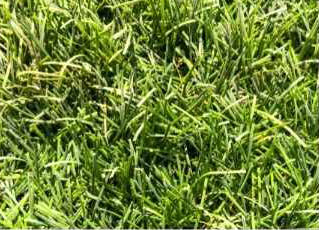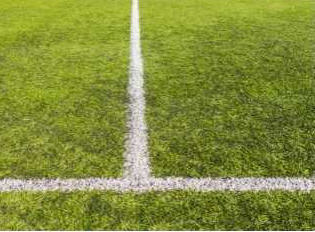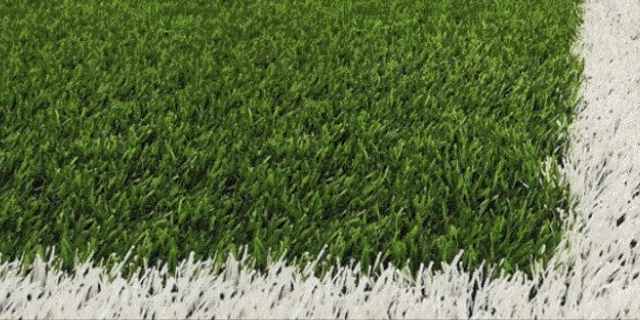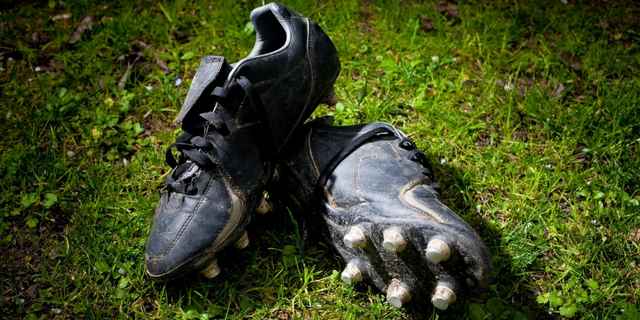What is the difference between firm ground and soft ground boots? Do players need two different pairs of cleats? Or can they use one type for all matches?
This article explains why there are two types of rugby boots. Then we’ll look in detail at the differences between them, and which is best for your needs.
Choice Of Firm Ground And Soft Ground Boots Depends On The Pitch
The reason that there are firm ground and soft ground rugby boots is because the sport is played across the world in different conditions and different types of pitches.
The first big difference is between natural grass and artificial surfaces.
Natural grass pitches
The most common type of pitch is still natural grass or turf. This is exactly what it sounds like; the pitch is set up on a flat outdoor area that has grass growing on it.
It has the advantage of being substantially less expensive to install and tends to be a cooler surface than artificial grass.
The downside of natural grass is that it may be somewhat uneven and requires more effort to maintain than artificial grass does.

Firm ground vs soft ground pitches
Natural grass can be considered either firm ground or soft ground, depending on conditions.
Soft ground is a natural pitch that is somewhat wet and therefore is a little more springy or spongy.
A dryer, packed natural surface is considered firm ground, as are artificial surfaces
Artificial grass pitches
Artificial grass is becoming more and more common in rugby, as it is easier to maintain and allows for play indoors in climates with bad weather.
For years, artificial grass had a bad reputation as a too-hard surface that caused abrasions and more serious injuries due to its hardness and the harshness of the artificial grass blades.
Modern third-generation (3G) and fourth-generation (4G) pitches are somewhat different.

3G artificial pitches
A 3G pitch is the most common type of artificial pitch that you will see.
It is made of longer synthetic grass than the earlier second-generation pitches that are no longer seen. 3G pitches usually have an infill of sand and tiny rubber pellets.
This creates a springy surface that is faster and more consistent than any natural grass field. But it still feels more like a natural field than any other kind of artificial grass.
4G artificial pitches

A 4G field is an artificial grass field that theoretically does not need any infill. They are also referred to as plastic patches.
These 4G fields are still controversial when it comes to player welfare. I’ve written in depth about the issues in our separate article on artificial pitches in rugby.
Enough about pitches, what about the boots?
Now that we’ve looked at the types of grounds, let’s look at how this influences your choice of rugby boot.
What Are Soft Ground Rugby Boots?
Soft ground (SG) rugby boots are boots that are designed for use on natural turf when it’s wet and soft.
They are meant to help the player in these conditions by improving traction and acceleration.
Studs for soft ground
The studs on SG boots are usually removable and interchangeable. This allows the player to customize the stud length to the very specific conditions of the game.
The available studs are generally between 12 and 19 mm long and made of metal.
The studs are longer than those on an FG boot to penetrate the ground for more traction and acceleration.
SG boots commonly have either six or eight studs, which is less than firm ground cleats.
The lower number of studs focus more weight on each stud, helping to drive it more deeply into the ground.
If you’re not familiar with boots, we have a general overview of the different types of rugby studs.
Best stud design for backs on soft ground?
The six stud design generally has two studs on the heel and four on the ball of the foot.
While this does not give quite as good traction as the eight stud design, it is a faster boot for running at pace. This means that it’s a good choice for players in the backline.
Best stud design for forwards on soft ground?
The eight stud design has two studs under the heel and four on the ball of the foot.
This is better for forwards. Although they may lose a little running speed, they will have more traction in a scrum, maul, or ruck.
What Are Firm Ground Rugby Boots?
Firm ground (FG) are the most commonly used rugby boot because they can be used in a wide variety of conditions and surfaces.
Studs on firm ground boots
FG boots can have between eleven and thirteen studs. These allow for better traction and acceleration on firm surfaces.
Having more studs ensures that your weight is more evenly distributed across the foot. This means that the boot is less stressful to any one part of the foot.
The studs on FG bootss are shorter than SG boots. They are conical in shape and usually molded. FG cleats may also have blades or a combination of studs and blades.
Because they are shorter, they are less likely to catch awkwardly in the ground and cause ankle injuries. They are also more comfortable on a harder surface.
Use on both artificial surfaces and natural firm grass
Firm ground boots are useful for artificial surfaces which are always firm ground.
But they are also used on natural surfaces where the grass is short and the ground is dry and hard.
If you are playing in a climate where the rugby season tends to be dry, FG boots are the sensible choice.
Can FG boots be used on soft ground?

Some players wear FG cleats on soft surfaces because they feel they are faster.
You may also play in a climate where the season starts in wet wintery conditions and runs into the firmer dry grounds of spring and summer.
Many players will have two sets of boots for exactly this reason.
But what if you can only afford one pair? Then I suggest you go with a pair of FG boots for their versatility with different surfaces.
The major downside is on a muddy surface due to the studs being shorter. It’s easier for mud to build up between the studs in a way that reduces traction.
You will be picking and scraping out the mud and turf when the clock is off. But if that’s only for a few rainy-day games across the season, this may not bother you too much.
Advice For Artificial Surfaces
If you are playing on artificial surfaces, there are some things you can do to maximize the experience.
If you can afford it, get a pair of artificial grass (AG) boots.
AG boots are very similar to FG boots. The only real difference is that the AG boots have slightly smaller and more circular studs than the FG boots.
Avoid SG boots on artificial pitches
Do not, under any circumstances, wear SG boots on an artificial surface.
For one, it may very well not be allowed. The studs can rip and damage the surface. But that’s a problem for the groundsman and the club. What about your own welfare?
Well, they are also dangerous and ineffective for the player.
The longer studs are actually a disadvantage on artificial grass because they can’t bite into it like they can dirt or mud.
The player now has fewer points of contact with the ground so their traction will be much worse than with any other kind of boot.
The uneven distribution of force will also cause the boot to be very uncomfortable, very quickly.
FG boots are okay on artificial pitches
FG boots are fine for artificial surfaces as long as the studs or blades are molded and plastic.
Since most FG boots really aren’t that different from dedicated AG boots, they work quite nicely on artificial grass.
More About Boots And Cleats
Check out these articles if you’re as interested in rugby boots as we are!